CLASS I RAILROAD
BNSF Railway: Moving $200 Billion in Goods Annually Across 33,400 Miles—Largest Freight Rail Network in the U.S.
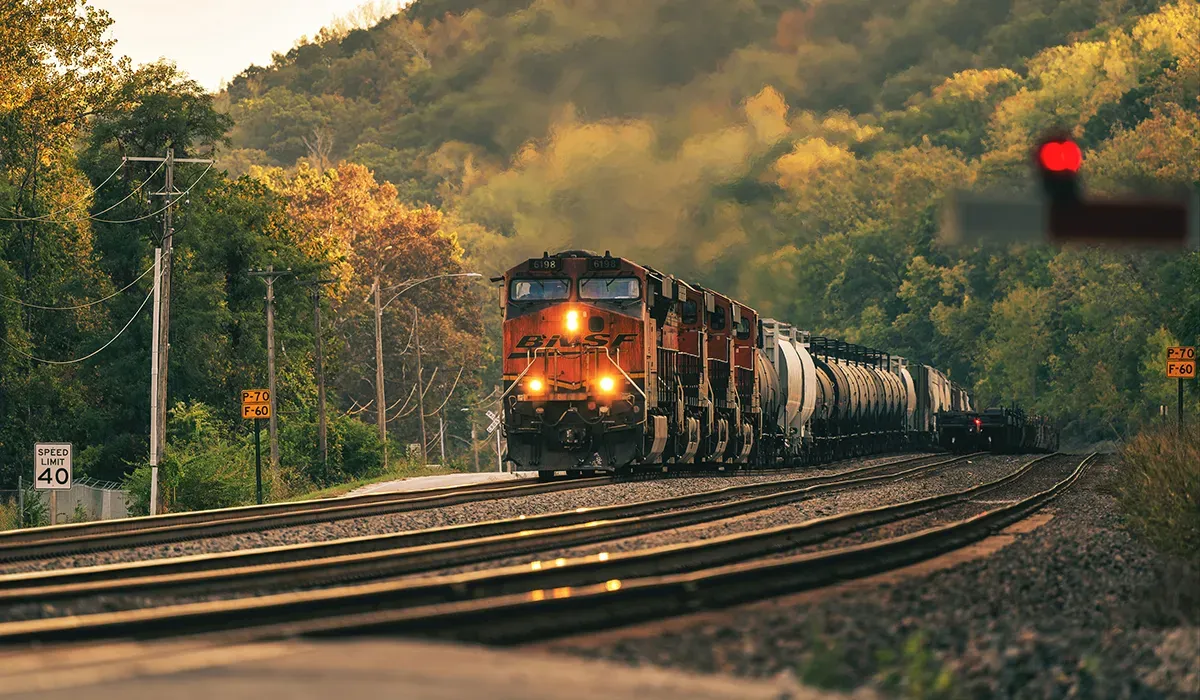

BNSF Railway operates one of North America's most extensive freight rail networks, connecting businesses across 28 states with safe, efficient, and environmentally responsible transportation solutions. The company manages approximately 33,400 route miles of track and is a leading transporter of intermodal containers, coal, agricultural products, and industrial goods..
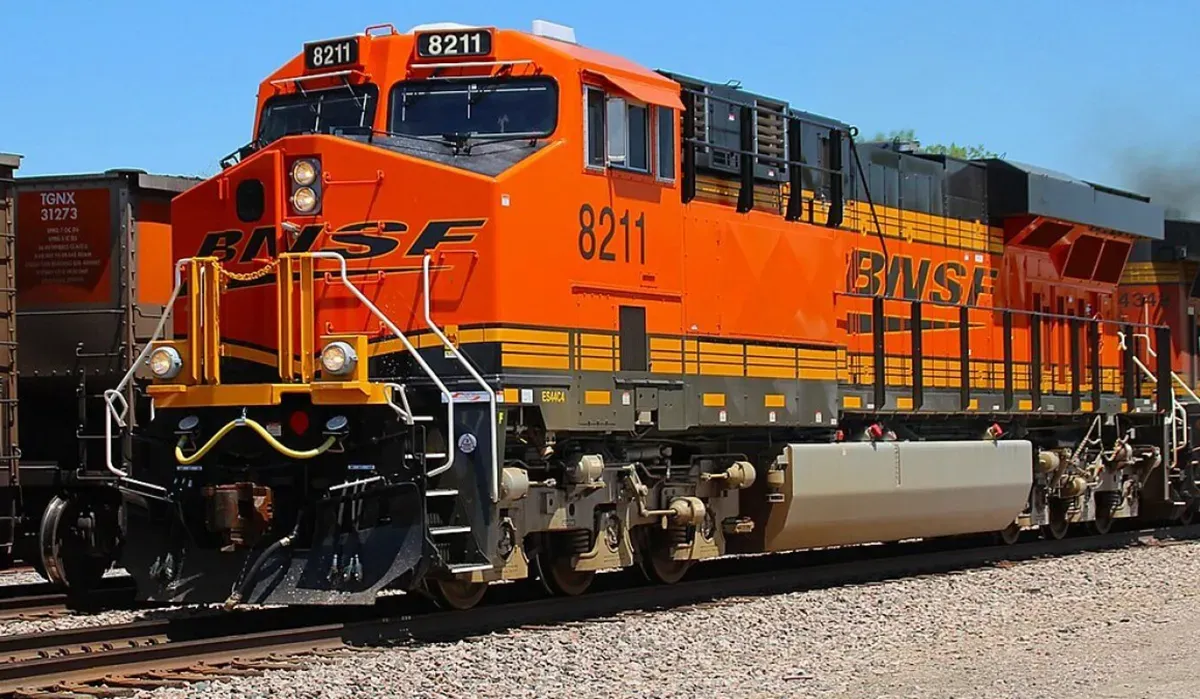
FOUNDING HISTORY & ORGANIZATIONAL STRUCTURE
BNSF was founded through the merger of Burlington Northern Railroad and Atchison, Topeka and Santa Fe Railway, with the holding company established on September 22, 1995, and the formal merger completed on December 31, 1996. The railroad became a wholly owned subsidiary of Berkshire Hathaway in February 2010, marking a significant milestone in its corporate history..
HEADQUARTERS & OPERATIONAL BASES
The headquarters of BNSF Railway is located at 2650 Lou Menk Drive, Fort Worth, Texas 76131. This modern facility serves as the central hub for executive leadership, network operations, and strategic planning, supporting the company's vast rail system and customer service functions..
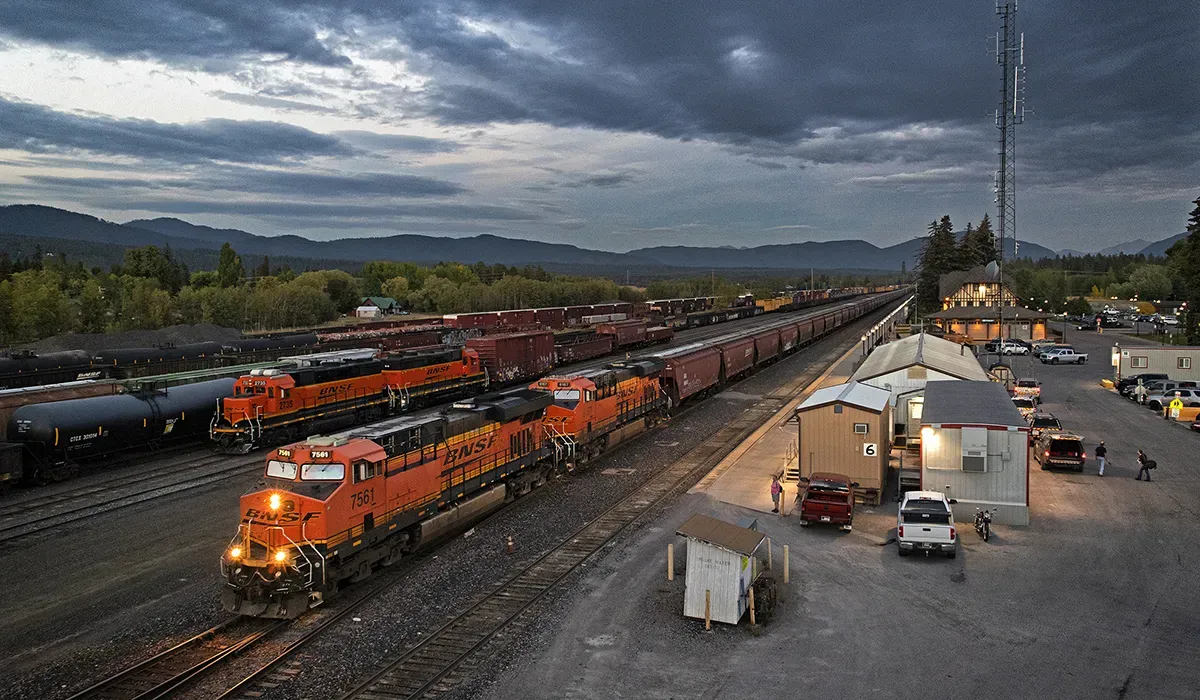
LEADERSHIP & EMPLOYEES
Kathryn Farmer serves as CEO and President of BNSF Railway, making history as the first female chief executive of a Class I railroad. The executive team also includes Matt Garland as Executive Vice President and Chief Transportation Officer, who leads operational initiatives focused on safety, velocity, and service reliability. Other key leaders oversee finance, technology, and network operations, bringing decades of industry experience to the company.
BNSF employs approximately 36,000 people, with a significant portion working as skilled craftspeople, maintenance workers, and service teams who keep the network running safely and efficiently. The workforce is diverse, with ongoing efforts to increase representation across all operational and leadership roles.
FACILITIES & OPERATIONS
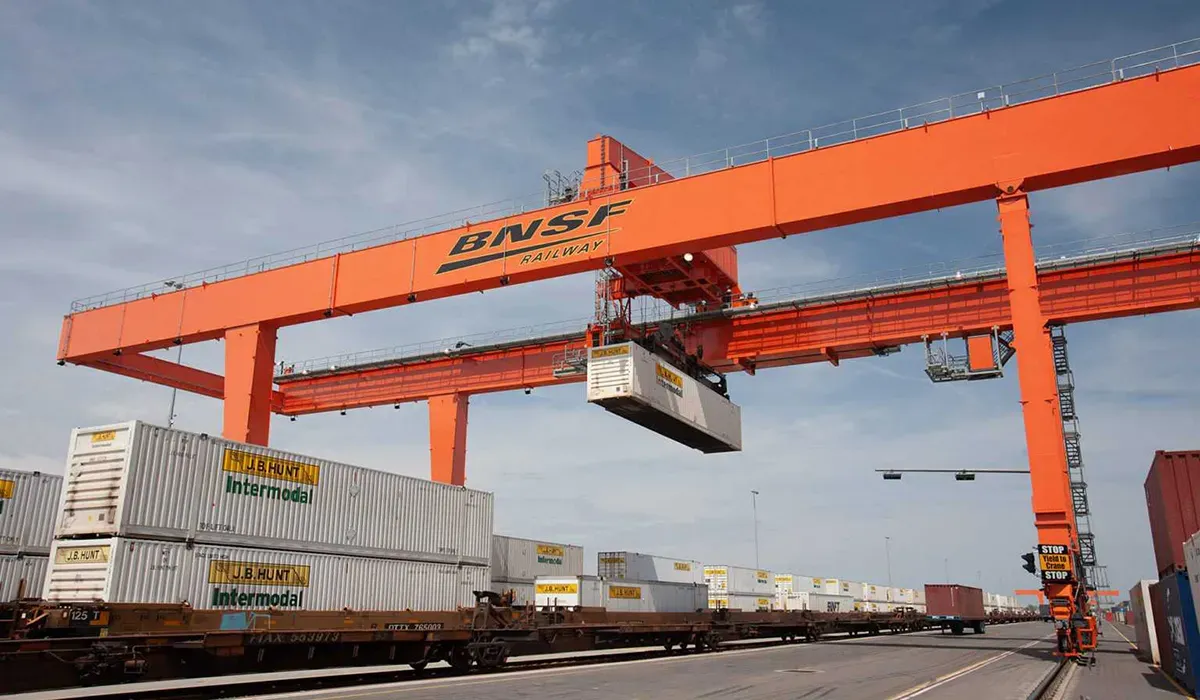
Major BNSF facilities include the Cicero Intermodal Facility in Illinois, the Barstow Yard in California, the Argentine Yard in Kansas City, Kansas, the Alliance Intermodal Facility in Texas, and the Northtown Yard in Minneapolis, Minnesota. Additional key locations include the Seattle International Gateway in Washington, the Memphis Intermodal Facility in Tennessee, and the Logistics Park Chicago in Illinois, each serving as critical hubs for freight movement and logistics.
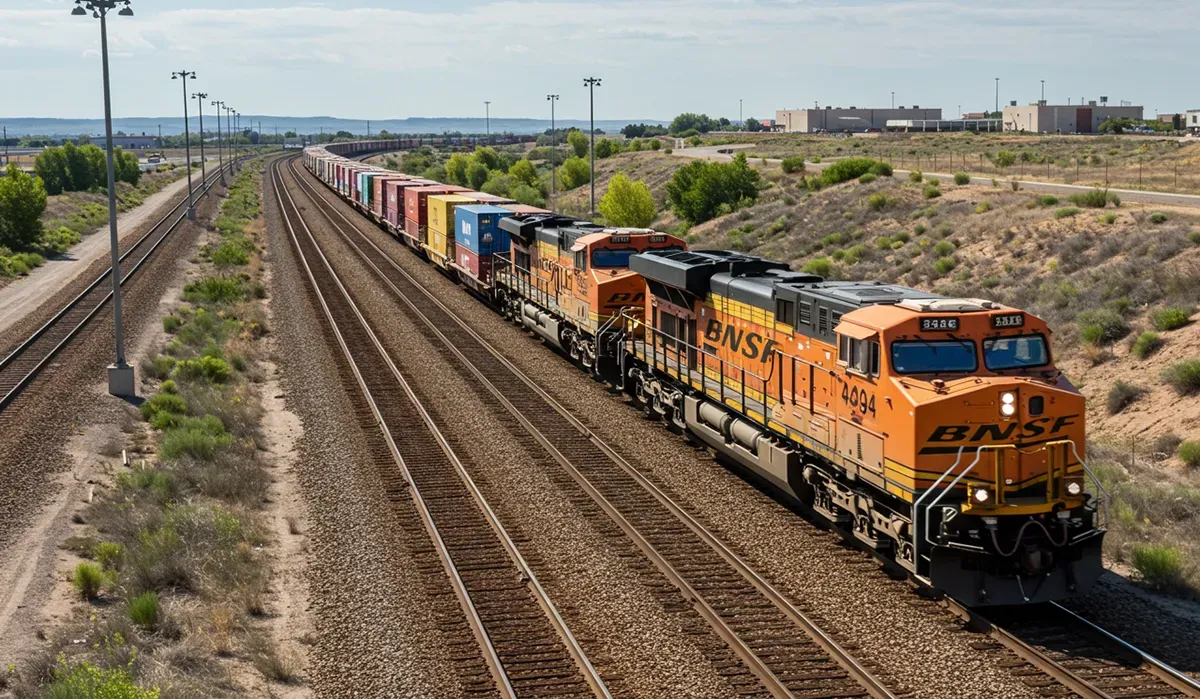
BNSF maintains ISO 14001 environmental certification at several facilities and has received multiple safety awards for its operational practices. The company is fully compliant with Federal Railroad Administration (FRA) regulations and has been recognized for its environmental stewardship and workplace safety programs.
EQUIPMENT & INFRASTRUCTURE
BNSF handles a wide range of container types, including intermodal containers up to 53 feet in length, boxcars for general freight, tank cars for liquids and chemicals, and flatcars for oversized loads. The company also operates specialized high-capacity covered hoppers for grain and bulk commodities.
BNSF utilizes advanced technology platforms such as real-time shipment tracking, automated dispatch systems, and a robust customer portal for shipment management. The company offers an API Center for seamless integration with customer logistics systems and employs automation technologies for yard operations and safety monitoring.
The BNSF network spans 28 U.S. states, covering approximately 33,400 route miles, with key corridors connecting the Pacific Northwest, California, the Midwest, Texas, and the Southeast. The railroad's transcontinental routes link major ports and inland markets, supporting both domestic and international trade.
BNSF maintains strategic partnerships with major railroads such as Canadian National, Canadian Pacific Kansas City, and Norfolk Southern, as well as leading ocean carriers and logistics companies including J.B. Hunt. These collaborations enable seamless intermodal and cross-border freight movement.
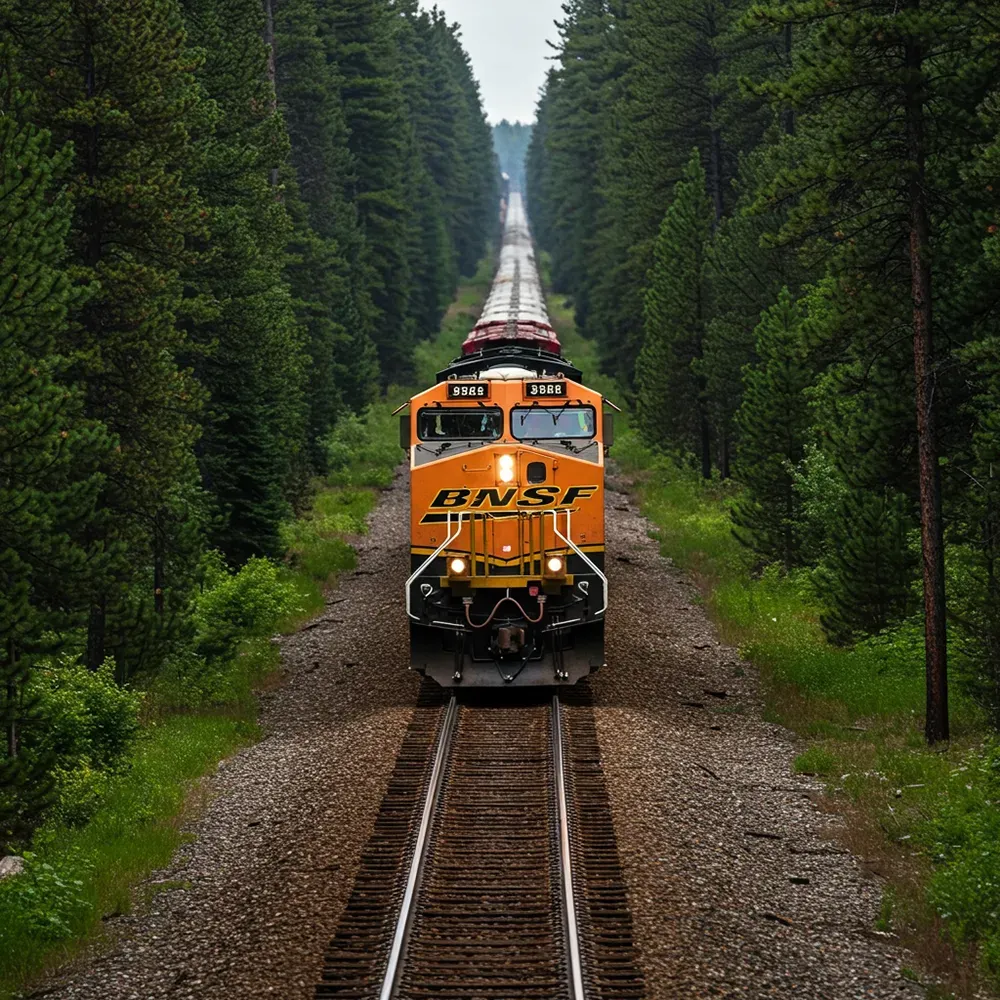
FINANCIAL METRICS & STABILITY
In 2024, BNSF reported a pre-tax profit of $7.5 billion on revenues of $24.8 billion. The company's operating ratio improved to 61.5 percent, reflecting enhanced operational efficiency and cost management.
Recent capital investments include a $3.8 billion plan for 2025, with $2.84 billion allocated to network maintenance and $535 million for expansion and efficiency projects. Notable projects include the Barstow International Gateway in California and the expansion of the Cicero Intermodal Facility in Illinois.
SERVICE PORTFOLIO

BNSF offers a range of logistics services, including full container load (FCL) and less than container load (LCL) shipments. Additional services include customs brokerage, trade compliance consulting, cargo insurance, and supply chain optimization, supporting customers across diverse industries.

BNSF has launched a new customer portal to enhance self-service capabilities and improve day-to-day activities for its clients. Additionally, the company offers an API Center to facilitate seamless integration with customer systems, providing real-time data and shipment visibility.
INDUSTRY REPUTATION & NEWS
BNSF is actively working to enhance operational efficiency and service quality. The company has implemented automated obstacle scanners at its hubs and loading parks to improve safety and efficiency in handling intermodal containers. Recent developments also include the launch of new carload services and the expansion of certified rail-served sites.
BNSF's Site Certification Program has identified optimal rail-served sites and conducts in-depth reviews to ensure readiness for development. This program aims to minimize development risks for customers and enhance supply chain efficiency. The company has also received recognition for its environmental and safety initiatives.
ANALYSIS & FUTURE OUTLOOK